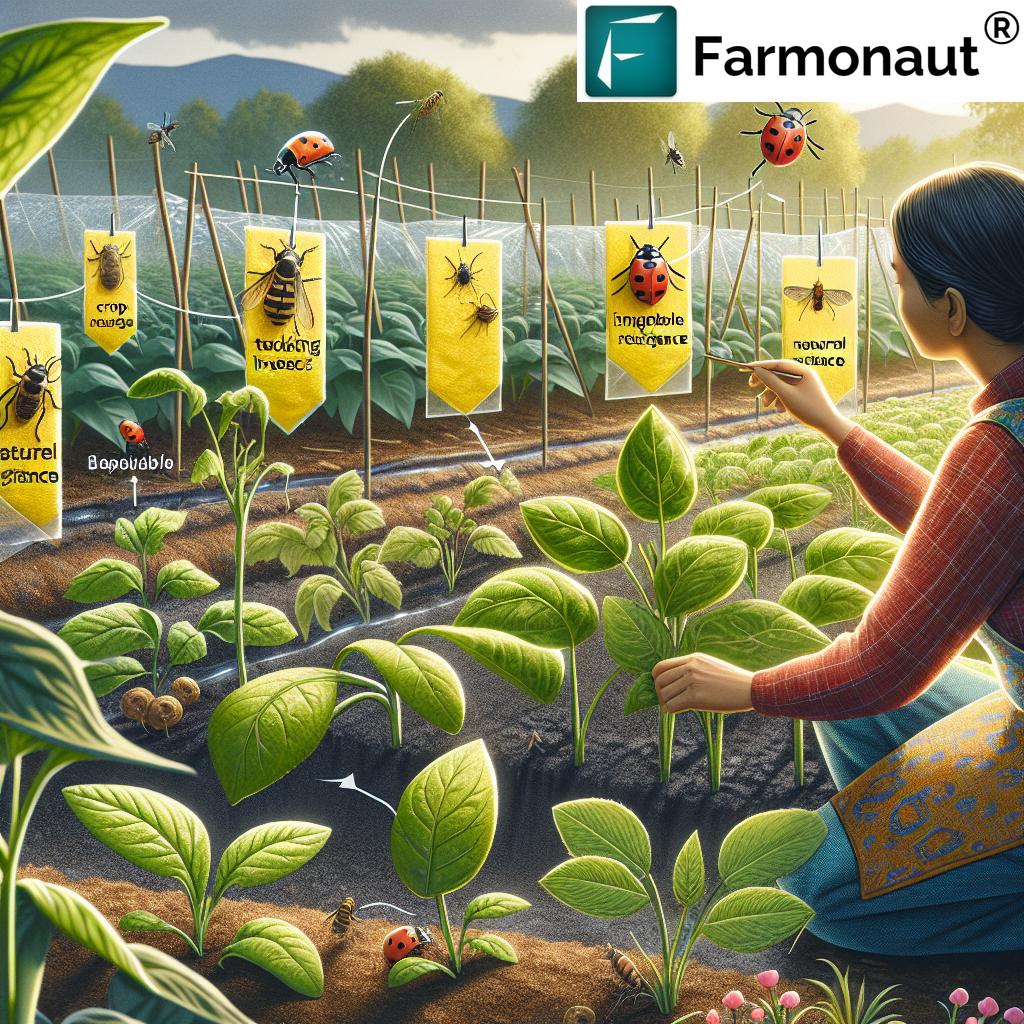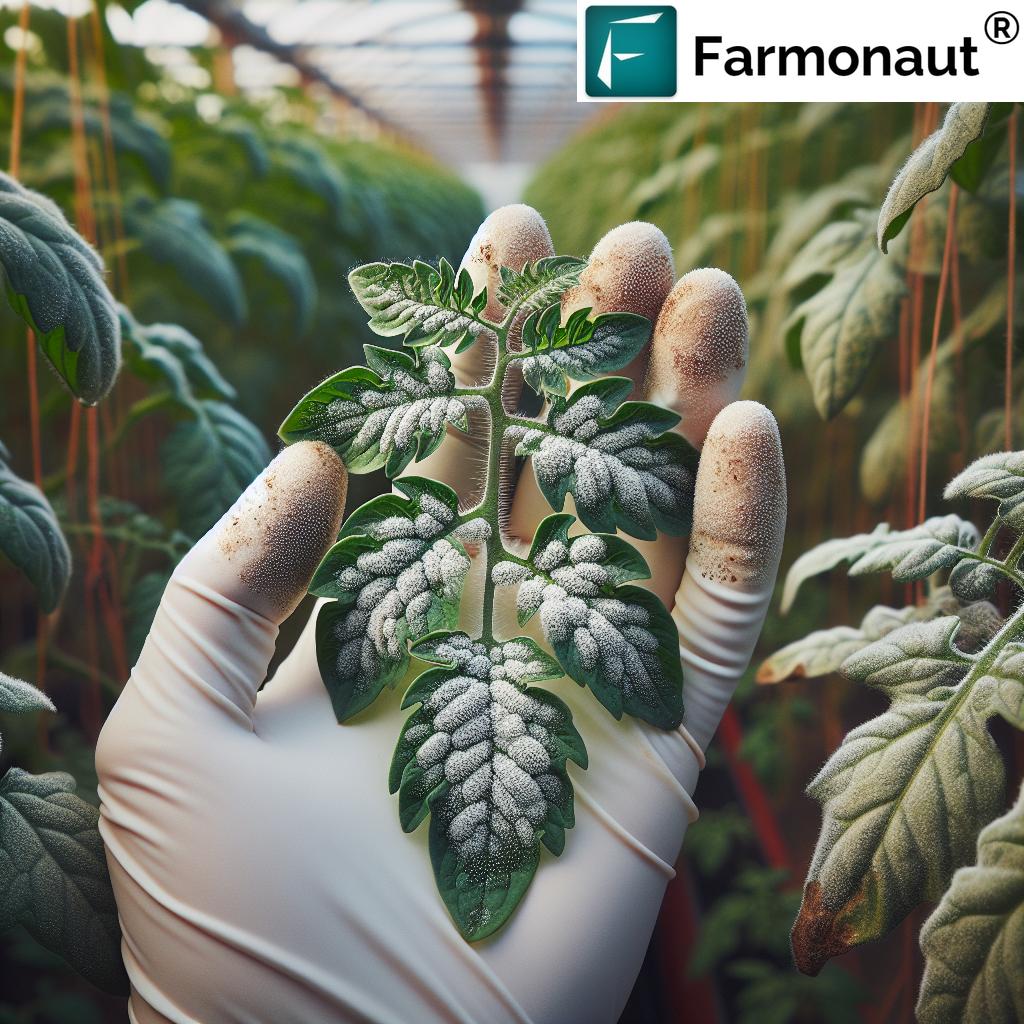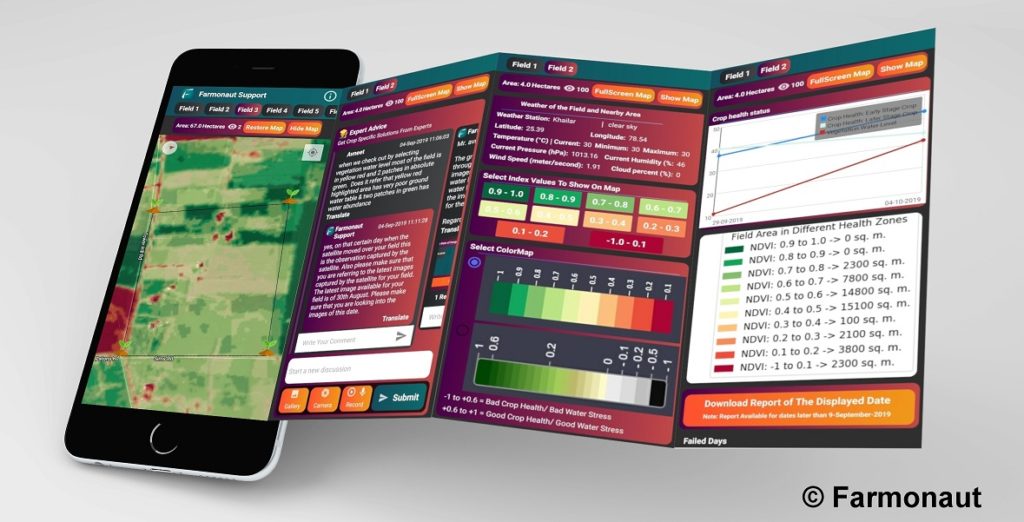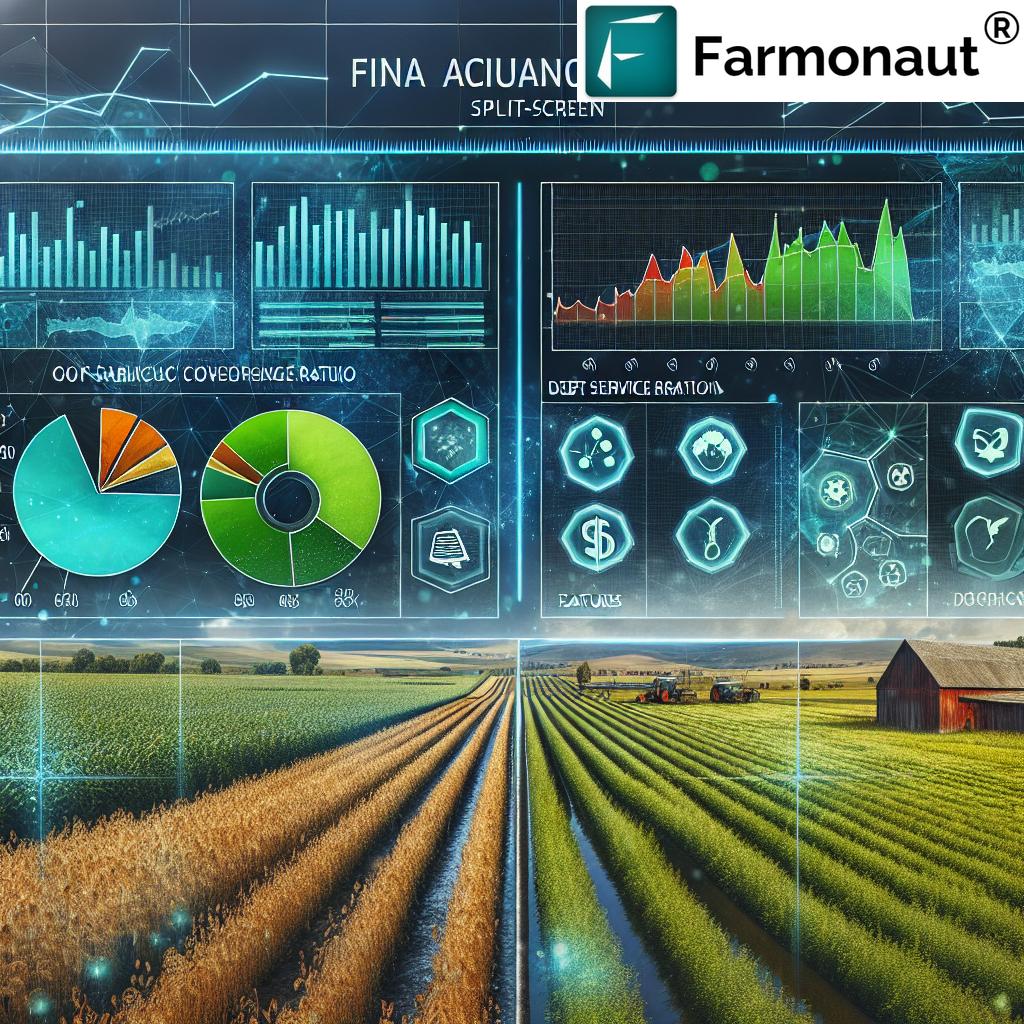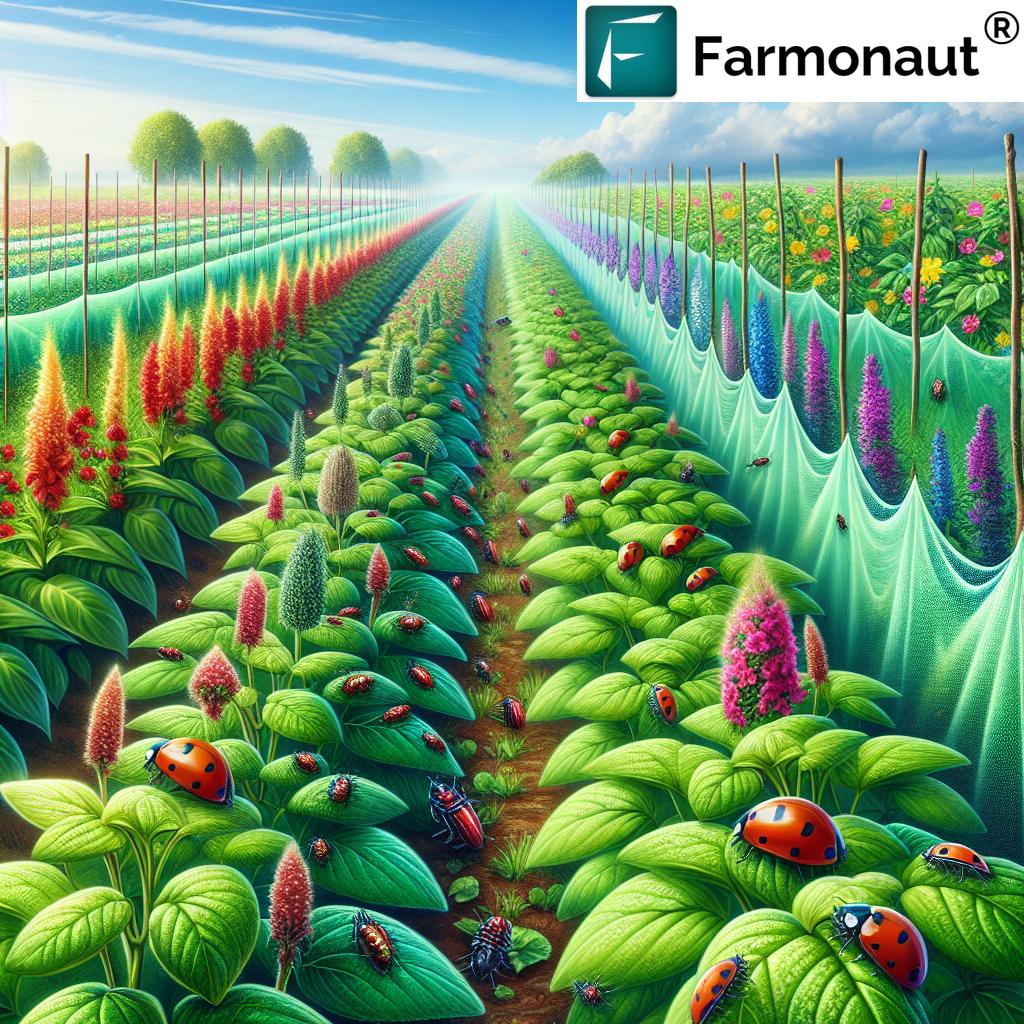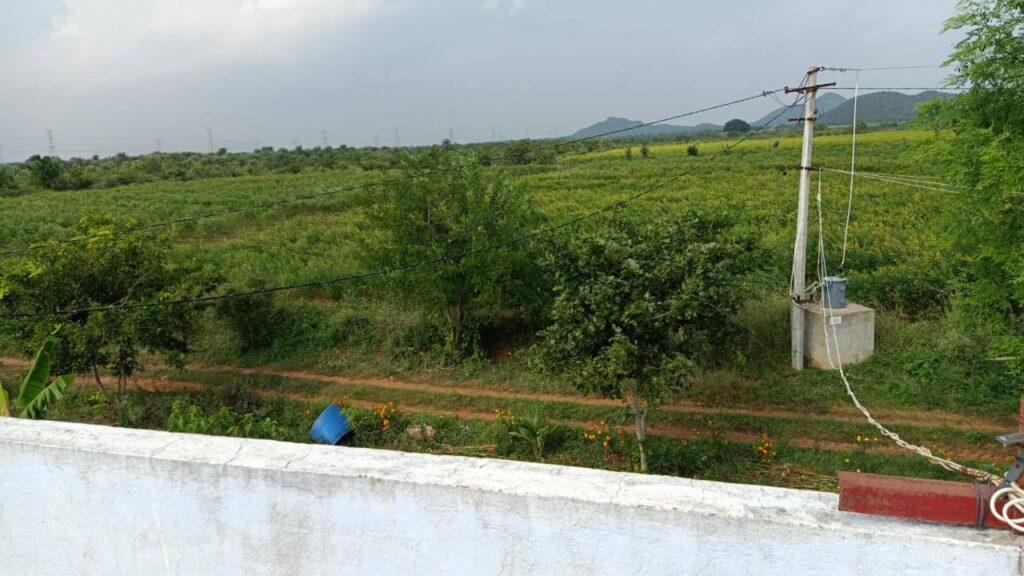Farmer Education: 7 Secrets to Explode Your Yields!
Table of Contents
- Introduction
- The Importance of Farmer Education
- The 7 Secrets to Explode Your Yields
- Farmer Education: Visual Learning (Images & Videos)
- Comparison Table of Sustainable Practices vs. Traditional Methods
- Effective Educational Models in Sustainable Farming
- Challenges & Solutions in Farmer Education
- How Farmonaut Empowers Farmer Education and Sustainable Agriculture
- Farmonaut Subscription Plans
- Frequently Asked Questions (FAQ)
- Conclusion: Driving Modern Agriculture Forward with Education
Introduction
In today’s rapidly changing world of agriculture, education for farmers is no longer optional—it’s a necessity. As we strive for sustainable farming practices that deliver both high productivity and robust environmental stewardship in farming, farmer education programs have emerged as the cornerstone for improving crop yields, strengthening resilience to climate change, and driving economic stability in rural communities.
With the right training, resources, and access to modern agricultural technologies, farmers can transform their lands—unlocking new levels of efficiency, sustainability, and profitability. In this comprehensive guide, we unveil the 7 secrets of farmer education that can help explode your yields, fortify your farm’s future, and create a positive impact on our shared environment.
The Importance of Farmer Education in Modern Agriculture
Why is farmer education so vital in the context of modern agriculture? Research shows that farmers with access to formal education and training programs are demonstrably better at adopting innovative practices such as high-yielding crop varieties, integrated pest management (IPM), and data-driven resource management strategies. This not only results in improving crop yields but also enhances soil health, reduces dependency on chemical pesticides, and fosters environmental sustainability.
- Informed Decisions: Education empowers us to manage our resources judiciously and make better choices regarding pest control, water usage, and market strategies.
- Adoption of Modern Technologies: Farmers equipped with the latest skills integrate precision tools, remote sensing, and data analytics—key to optimizing productivity.
- Promoting Sustainability: With knowledge, we implement eco-friendly techniques such as crop rotation, organic farming, and agroforestry—essential for long-term soil fertility and biodiversity.
The evidence is clear: farmer training and development is no longer a luxury—it’s an essential ingredient of modern, productive, and sustainable agriculture.
Farmer Education: The 7 Secrets to Explode Your Yields
Let’s dive into the seven powerful secrets hidden within effective farmer education programs—each one proven to enhance crop yields, promote environmental stewardship, and buttress the economic backbone of rural farming families.
1. Soil Health Management: Laying the Foundation for Explosive Yields
Soil health is the starting point of any successful farm management practice. Through comprehensive education and training, we can learn to:
- Analyze and interpret key soil health metrics (like organic carbon, pH, nutrients)
- Apply methods to boost soil fertility—including composting, cover cropping, and organic amendments
- Reduce overuse of synthetic inputs, maintaining ecological balance
Farmonaut’s advanced soil health monitoring solutions use satellite-based NDVI and soil moisture analytics to give farmers real-time data, enabling smarter resource allocation and proactive soil management.
For more on how to unlock the secrets of sustainable soil management, check out the video below:
2. Integrated Pest Management (IPM) Training: Reducing Chemical Reliance
Traditional farming often results in the overuse of pesticides, adversely impacting the environment and farmer health. Integrated Pest Management (IPM) training teaches us to:
- Combine cultural, mechanical, biological, and (where necessary) chemical controls
- Monitor pest populations with precision tools & real-time alerts
- Encourage adoption of beneficial insects and biological control methods
With access to satellite imagery and AI-powered pest monitoring systems (such as those in Farmonaut’s crop health monitoring platform), we can act quickly to reduce pest risks and minimize crop loss, all while reducing our environmental footprint.
Learn how data and remote sensing help us target and manage pest threats:
3. Water Conservation and Smart Irrigation: Every Drop Counts
In an age where climate change threatens water supplies and rainfall patterns, water conservation education becomes the difference between profit and peril. Modern techniques include:
- Training on water-efficient irrigation—like drip and sprinkler systems
- Real-time monitoring of soil moisture using remote sensing technology
- Implementing rainwater harvesting and mulching strategies
Farmonaut’s farm management apps help monitor soil moisture and alert us when our crops truly need water, leading to optimized water use and cost savings.
Explore the precision water management feature in Farmonaut’s mobile and web platforms to see these benefits in action.
4. Crop Rotation and Biodiversity: Sustainable Farming for Tomorrow
Monoculture—growing the same crop repeatedly—depletes soil, invites pests, and encourages disease. Through effective farmer education programs, we unlock tools to:
- Design rotational plans that restore nutrient balance and break pest cycles
- Introduce legumes, cover crops, and agroforestry elements for soil and ecosystem health
- Increase resilience to climatic changes and market shocks by diversifying farm outputs
Such sustainable farming practices are proven to boost long-term yields, stabilize farm incomes, and build stronger agroecosystems.
5. Precision Agriculture & Technology Integration: The Power of Data
The frontier of modern agriculture lies in agricultural technology integration. By adopting digital tools and data-based decision-making, we can:
- Use satellite imagery, AI advisory, and blockchain traceability for better farm management
- Track crop health and monitor fields—for early stress or disease detection
- Implement precision input applications, applying fertilisers, water, and pesticides only where and when required
- Digitally manage resource use, carbon output (Farmonaut Carbon Footprinting), and supply chain transparency (Farmonaut Traceability)
Watch how our technology-enabled education revolutionizes decision making:



6. Farm Record-Keeping & Financial Literacy for Farmers: Maximizing Profits, Reducing Risks
Keeping clear records and understanding financial management are essential skills for economic growth:
- Track inputs, outputs, crop performance, and resource use for strategic planning
- Assess risks and secure the right insurance and loans—learn about Farmonaut’s satellite-based verification for crop loans and insurance
- Access better markets by meeting traceability and compliance standards—boost income and build trust
Empowered with financial literacy for farmers, we negotiate better deals, diversify our livelihoods, and ensure economic sustainability. Explore the banking and risk-reduction features with Farmonaut Crop Loan & Insurance Solutions.
7. Adaptive Learning & Remote Training: Keeping Up with Change
With fast-paced developments in climate change adaptation in agriculture, new pests, and emerging technologies, continuous learning is non-negotiable. Farmer education programs now offer:
- Farmer Field Schools (FFS) and peer-to-peer learning—transfer hands-on knowledge within communities
- Access to remote learning for farmers—online workshops, mobile apps, and digital resources
- Resilient learning models that adapt to local culture, climate, and challenges
Farmonaut apps are built for accessibility—helping even remote farmers access advice, weather alerts, and farm analytics, anytime and anywhere. Leverage remote learning for farmers for your business or community by exploring the Farmonaut API or integrating with your own systems using the Developer Docs.
See how simple digital integration works with Farmonaut’s WhatsApp advisory system:
Farmer Education: Visual Learning (Images & Videos)
As part of comprehensive farmer education programs and training, visual content empowers us to grasp complex ideas rapidly. Here are key visuals to enhance your sustainable farming journey:
Each visual demonstrates the importance of integrating technology into sustainable farming practices, helping to optimize resources, monitor crop health, and manage fields with unprecedented precision.
Comparison Table: Sustainable Practices vs. Traditional Methods
| Practice / Strategy | Traditional Method (Estimated Results) | Sustainable/Educated Approach (Estimated Results) | Impact on Yield (%) | Environmental Benefit |
|---|---|---|---|---|
| Soil Health Management | Poor rotation, overuse of chemicals, little soil analysis (Decreasing yields over time) |
Composting, cover crops, precision nutrient application, regular soil testing | +20-25% | Restores fertility, reduces erosion, improves carbon sequestration |
| Integrated Pest Management (IPM) | Routine chemical pesticide use (High residues, pest resistance) |
Scouting, traps, biological controls, targeted minimal pesticides | +10-15% | Reduces chemical use by 20-30%, protects pollinators |
| Water Conservation | Flood irrigation, inefficient scheduling (High water waste) |
Drip/sprinkler, sensor-guided irrigation, drought-resistant varieties | +12-20% | Reduces water use by 30-50%, improves drought resilience |
| Crop Rotation & Biodiversity | Monoculture, repeated planting (Disease/pest buildup) |
Diverse rotations, legumes, intercropping, agroforestry | +15-20% | Enhances soil health, increases ecosystem resilience |
| Precision Agriculture & Technology | Manual observation, blanket application of inputs | Remote sensing, satellite monitoring, AI-driven decision support | +25-30% | Reduces input waste, minimizes emissions, optimizes resource use |
| Record-Keeping & Financial Literacy | Informal, paper-based records, minimal planning | Digital tracking, ROI & risk analysis, access to loans/insurance | +10-15% | Reduces financial risk, supports livelihood sustainability |
| Adaptive Learning & Continuous Training | Static knowledge, slow innovation uptake | Ongoing digital education, field schools, app-based updates | +8-12% | Boosts adaptability, ensures long-term innovation adoption |
Effective Educational Models: Building Capacity in Farming Communities
Our greatest strides in environmental stewardship in farming and improving crop yields are achieved when education is:
- Demonstration-based: Farmer Field Schools (FFS) foster group-based, peer learning focused on practical agroecology and innovative methods.
- Community-led: Knowledge is shared in local languages, with trainers drawing on both formal research and indigenous know-how.
- Adaptive: Curricula evolve to address new climate risks, pest outbreaks, and market opportunities, keeping communities resilient and forward-looking.
Key examples:
- Farmer Field School (FFS): Originating in Asia, FFS teaches through on-farm experimentation and teamwork, leading to large reductions in chemical use and major productivity gains.
- SARE (USA): Competitive grants and training programs that foster innovation, stewardship, and profitability.
By incorporating technology integration, such as Farmonaut’s large scale farm management tools, these educational models can reach even more remote farmers, support governments and agribusinesses, and accelerate the adoption of sustainable practices worldwide.
Challenges & Real-World Solutions in Farmer Education
Despite the enormous benefits of farmer training and development, the agricultural sector faces ongoing challenges:
-
Resource Access: Many farmers in remote regions struggle to access high-quality training materials and tools.
- Solution: Remote learning for farmers, digital apps, and mobile platforms (such as Farmonaut’s App) deliver knowledge directly—overcoming barriers of distance and infrastructure.
-
Cultural Resistance: Some communities hesistate to change traditional practices, fearing risks or losses.
- Solution: Community-based training, demonstration plots, and championing local change agents foster trust in new methods.
-
Financial Constraints: Education and technology adoption may be perceived as too costly.
- Solution: Government support, subsidies, and affordable subscription-based models (see Farmonaut’s plans below) lower the entry barrier for all farmers.
By proactively addressing these obstacles, we ensure that every farmer—irrespective of location or resources—can become a steward of sustainable, productive agriculture.
How Farmonaut Empowers Farmer Education and Sustainable Agriculture
Farmonaut is setting new standards in affordable, scalable, and high-impact farm management—delivering technological empowerment to every segment of the agricultural ecosystem. Here’s how we support farmer education and sustainability:
- Satellite-Based Crop Health Monitoring: Farmers access real-time NDVI maps, soil moisture status, and targeted advisories to inform every critical resource management and pest control decision.
- AI-Driven Jeevn Advisory System: Personalized, expert recommendations on crop management, weather preparedness, and field actions—directly on your device.
- Blockchain Traceability: Enhance market access and consumer trust with full transparency using Farmonaut Traceability Solutions.
- Precision Resource and Fleet Management: For smallholders and large enterprises alike—optimize logistics, reduce input costs, and improve efficiency using state-of-the-art digital tools. Discover more in Farmonaut’s Fleet Management solutions.
- Carbon Footprinting: Track and reduce your environmental impact with Farmonaut’s Carbon Footprinting Platform—a key benefit for those committed to environmental stewardship in farming.
- Accessible Apps & APIs: From free mobile apps to dedicated APIs for research institutions and businesses, Farmonaut makes precision agriculture accessible. Integrate with your existing systems using Farmonaut’s Developer Docs.
Farmonaut Subscription Plans: Affordable Solutions for Every Farmer
Farmonaut operates on a flexible, subscription-based model—making precision agriculture, satellite monitoring, and training affordable for:
- Individual farmers (smallholder or large scale)
- Agribusinesses and plantation managers
- Government bodies advancing sustainable farming
- NGOs supporting climate change adaptation in agriculture and rural education
Explore our latest subscription options:
Have special needs or want API access? Find out more about our developer and research solutions at Farmonaut API Page.
Frequently Asked Questions (FAQ): Farmer Education & Sustainable Agriculture
Why is farmer education so essential for sustainable agriculture?
Education empowers us as farmers to make informed decisions about resource use, adopt innovative sustainable farming practices, and respond effectively to climate change and market challenges. This leads to higher yields, more stable incomes, and a healthier environment for all.
What are the 7 secrets to explode farm yields?
The seven secrets are: 1) Soil Health Management, 2) Integrated Pest Management Training, 3) Water Conservation & Smart Irrigation, 4) Crop Rotation & Biodiversity, 5) Precision Agriculture & Technology Integration, 6) Farm Record-Keeping & Financial Literacy, and 7) Adaptive Learning & Ongoing Training.
How can technology like satellite monitoring benefit my farm?
Satellite monitoring provides us with real-time data about crop health, soil moisture, and pest outbreaks. It allows targeted interventions, reduces input waste, and supports precision agriculture—leading to higher productivity and lower production costs.
Are Farmonaut’s tools suitable for smallholders?
Yes, Farmonaut offers modular, affordable tools for both small and large-scale farmers. Our mobile apps, web platform, and API services help you start small and scale as you grow, democratizing access to precision agriculture.
What is the best way to get started with sustainable practices?
Begin by learning about your soil health and water usage, and start integrating small steps like cover cropping, careful input management, and digital record-keeping. Farmonaut’s tools and farmer education programs can support you at every step.
How do I access Farmonaut’s digital advisory and monitoring platform?
You can download the Android or iOS app using the links above, or use the web platform for complete access. For more technical users, our API Developer Docs provide integration options.
Conclusion: Driving Modern Agriculture Forward with Farmer Education
The challenges we face as a global agricultural community—climate change, soil degradation, pest outbreaks, resource limitations, and volatile markets—are very real. But with strategically designed farmer education programs, rooted in sustainable farming practices and modern technological integration, we can turn these obstacles into unprecedented opportunities.
By investing in our knowledge and skills—as individuals, as teams, and as communities—we are not only increasing our yields and incomes. We are also safeguarding the land for generations to come and creating a more resilient, healthy, and equitable food system for all.
Take the next step: Explore Farmonaut’s affordable solutions, join a growing movement of digitally empowered farmers, and let us help you explode your yields—responsibly, sustainably, and profitably!
Ready to start? Learn more at Farmonaut Web Platform or dive into our API and advanced solutions for research and organizations. Let us put the power of modern farmer education in your hands—today.




